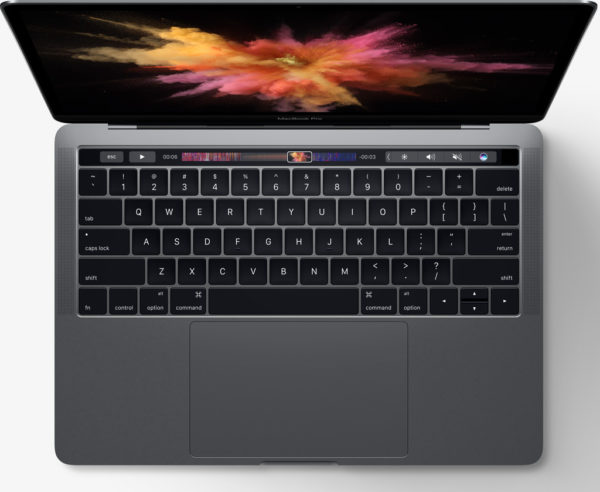Apple’s 2016 MacBook Pro and The Future
posted by Shane on 1st November 2016, at 4:14amIn late October 2016 Apple unveiled their revamped MacBook Pro notebooks at a media event. At these events we can normally expect some change in form factor to the computer. These changes are often incremental but this time the changes go far beyond incremental. Apple introduced a Touch Bar replacing the function key row and dramatically increased the size of the trackpad. Why? The future of the Mac is reliant on touch.
When most users think of touch they will think of a smartphone or a tablet. Apple doesn’t want the Mac to feature a touch screen since their iPad’s and iPhone’s already fit this market segment. Instead, we are seeing touch in the Mac appear as a third form of interaction in addition to the usual mouse cursor and keyboard. This was already apparent with Apple’s large multi-touch trackpad and later upgrading it to support Force Touch1.
When one thinks about using a notebook or desktop with a touch screen (Microsoft Surface aside) we see that by the nature of pure ergonomics touch screens don’t make sense for notebooks or desktops. The success of touch on mobile platforms has cemented the touch form of interaction as a staple going forward. When a technology is successful in one application but not in another it must be adapted. That’s what Apple has done with this MacBook Pro update.
A core aspect of usability states that in order to successfully move to a new paradigm (whether it be a website redesign or new form of interaction) it needs to be phased in over time and be accessible. That’s why Windows 8’s touch first design, though groundbreaking, was rejected by users; most notebooks and desktops don’t have touch screens! As a result we were greeted with Windows 10 which scales back reliance on touch and offers it as an option.
Apple accomplishes exactly this with the new MacBook Pro. Touch has been phased in and is completely accessible. Touch on Apple’s notebook’s started with the traditional trackpad. This trackpad was later upgraded to enable the same multi-touch gestures found on iOS; it was also brought to the iMac in the form of the Magic Trackpad. Later these trackpads were further upgraded to support Force Touch and they were made physically larger. The accessibility portion is accomplished by macOS. The new Touch Bar is completely configurable by users and app developers. It also supports Touch ID which iPhone users will be immediately familiar with. Both of these allow a user to move from a row of function keys to the new Touch Bar. It’s this interaction between software and hardware that sets Apple ahead of its competition.
For over 30 years the keyboard and mouse have been the primary form of input on our computers. This has been because the keyboard and mouse are so simple to use but also because we didn’t have the technology to invent anything new. With the prevalence of multi-touch, cheap LCD screens, E-ink advances we are poised for a breakthrough in interaction technology. In the next year I would expect Apple to release a standalone keyboard to bring the Touch Bar to iMac’s. Further innovations we could see include adding E-ink displays to the physical to enable a new level of customization. Further on down the line we could also see an increase in the vertical height of the Touch Bar. In the distant future I imagine that the keyboard as we know it would be replaced with a single touch screen capable of providing the same level of physical feedback we receive from keyboards today. (N.B. Apple is already preparing us for this by decreasing the profile of the keys on the new MacBook Pro.)

Based on the product launch, Apple’s videos, and extrapolating human computer interaction (HCI) principles it appears as though Apple could have just set the stage for the next 5 years of notebook and desktop PC advancement. Whether or not people like to acknowledge it, the PC market in general tries to emulate Apple. Apple was the first to bring out an ultra-thin notebook. Apple was the first to offer a unibody enclosure. Apple was the first to offer high-DPI displays. These are only a few examples of where Apple lead and the rest of the industry followed. If the industry does not follow Apple on this front they are missing a profound opportunity to innovate.
1: Force Touch is a technology that allows a user to have multiple interaction states with their trackpad. When using a Force Touch trackpad a user receives feedback for the standard clicking action. But if the user presses harder another click will be felt. This feature is open to app developers and is seeing increased use in macOS. Force Touch is implemented with haptics rather than a physical button, this means that aside from a small amount of give on the trackpad glass every other click the user feels is simulated.



